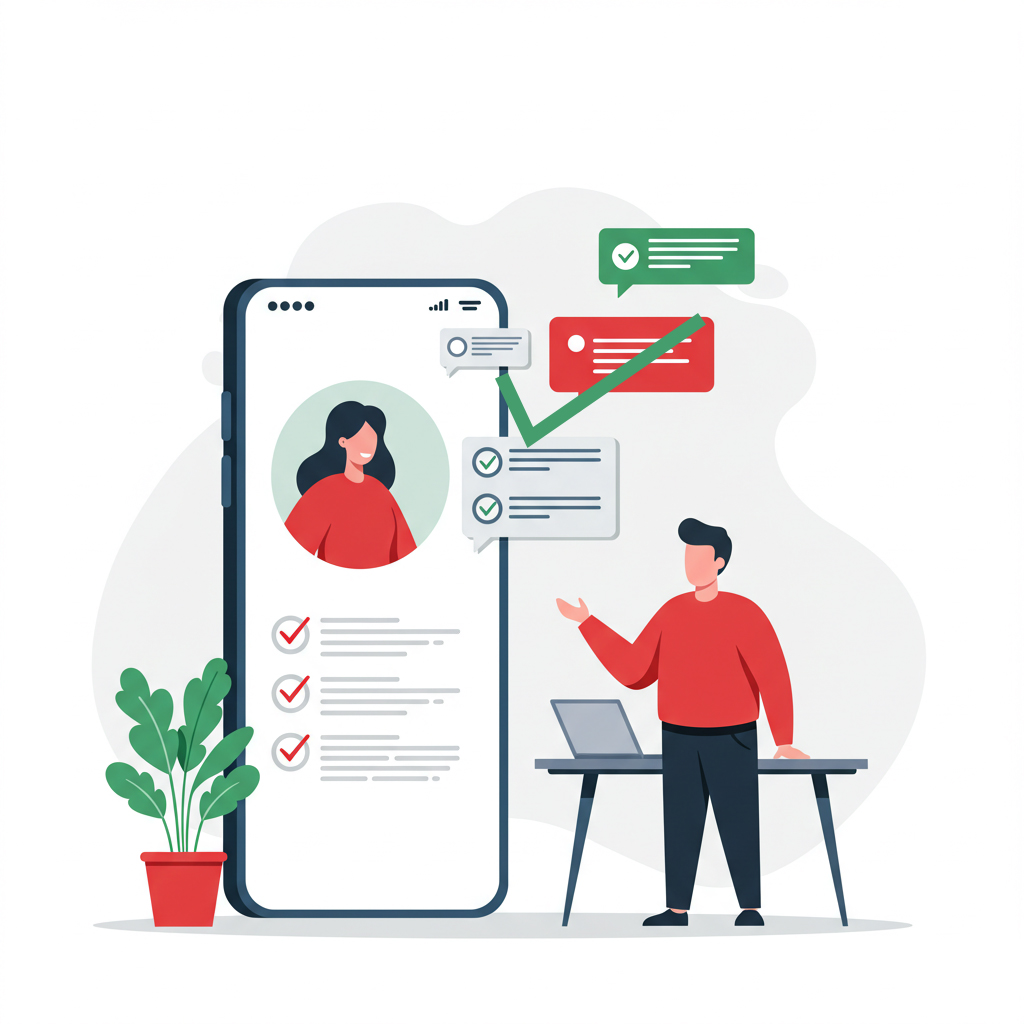So I went into a research mode, trying to understand why exactly we are so obsessed with how many bullets there should be per job, how long a resume should be, how far back it should go, which font is best, and so on. And there it is, ladies and gentlemen - cognitive load.
Recruiters and hiring managers read resumes under constant time pressure. Most give a document only a few seconds before deciding whether to move forward. In that brief moment, your words, formatting, and structure either make your value clear or bury it under clutter.
This is where cognitive load becomes important. Cognitive load refers to the mental effort required to process information. A strong resume keeps that effort low by using a clear structure, concise language, and a clean design. It essentially allows readers to quickly grasp your value and achievements. A cluttered resume does the opposite. It slows the reader down, forces them to re-read, and makes it harder to connect your skills to the job at hand.
When dozens (and sometimes hundreds) of applications are competing for attention, the resumes that stand out are rarely the longest or most detailed. They are the ones that are easiest to understand at a glance.
What is Cognitive Load in Resumes
As mentioned before, cognitive load is a concept from psychology that explains how much mental effort a person needs to process information. There are three main types.
- Intrinsic load relates to the actual complexity of the material, such as describing technical research or financial analysis.
- Extraneous load comes from distractions and poor design, like cramped layouts or overlong sentences.
- Germane load is the useful effort a reader invests in making connections and understanding the content.
You have probably felt this difference when trying to learn something new. Think about following a recipe, for example. A good cookbook lays out the ingredients in a clear list and breaks the method into numbered steps. That makes it easy to follow along as you cook. Now compare that to a recipe blog post where instructions are buried in a long story, with measurements scattered throughout the text or buried twenty scrolls down. The dish might be the same in the end, but one format makes the process smooth while the other makes you want to fling your phone into the oven.
Resumes work in the same way. When a document is overloaded with clutter, recruiters spend more energy decoding it than evaluating the candidate. With sometimes hundreds of applications to scan in an hour, their mental bandwidth is limited. A clear, well-structured resume reduces the strain, allowing skills and results to stand out quickly.
So, let's dive into what this means for your resume and for your job search overall.
The Psychology & Neuroscience Behind Quick Scans
Human working memory is limited. Most people can only hold between four and seven pieces of information at a time before attention starts to slip. That means if a resume presents too many details at once, the reader will miss or forget parts of the message.
Eye-tracking studies on how people read online documents show that we rarely move through text in a straight line. Instead, the eyes scan in an F-shaped pattern. First comes a horizontal sweep across the top section, then a quick look down the left margin, followed by shorter horizontal glances. This habit explains why section headers, job titles, and the first words of bullet points carry so much weight.
Recruiters also work under severe time limits. Research often cites a window of six to eight seconds for the first scan of a resume. Within that short frame, a recruiter decides if the document deserves a closer look or should be set aside. If the page feels cluttered or the main points are buried, extraneous load kicks in, and the reader moves on. Clarity and structure are not cosmetic choices here; they directly determine whether your application survives the first cut.
How Resumes (Unintentionally) Induce Cognitive Overload
Every resume asks the reader to process three kinds of information: the complexity of the content, the way that information is presented, and the connections that help the reader interpret it. In psychology, these are called intrinsic load, extraneous load, and germane load. Mistakes in each area make it harder for recruiters to understand your value quickly.
Intrinsic Load Mistakes
These problems come from the content itself being too heavy or complicated.
❌ Dense paragraphs. When achievements are presented in long blocks of text, the reader struggles to pick the highlights.
Example: "During my time at XYZ Corp, I was responsible for many functions, including team leadership, vendor management, financial oversight, training, and project planning, which allowed me to improve processes and achieve better outcomes..."
❌ Overstuffed skills. Listing every program and soft skill used in the last ten years creates a wall of information that is difficult to process.
Example: "Skills: MS Word, MS Excel, MS PowerPoint, Outlook, Slack, Zoom, Trello, Jira, Google Docs, Google Sheets, Google Slides, Microsoft Teams, Time Management, Communication, Leadership, Problem Solving, Adaptability."
❌ Jargon and overused buzzwords. Vague phrases like "results-driven" or "visionary" add to the word count but not meaning.
Example: "Dynamic, self-starter with proven track record of synergizing cross-functional deliverables to achieve business excellence."
Extraneous Load Mistakes
These mistakes are caused by design and formatting choices that get in the way of the message.
❌ Mixed styling. Switching fonts, colors, or spacing distracts the eye.
Example: Job titles in Times New Roman, dates in Arial, and bullet points highlighted in bright green.
❌ Weak hierarchy. Without clear headers or bullet points, there is no obvious path for the eye to follow.
Example: Work history written in one long, unbroken section with no job titles set apart from the text.
❌ Inconsistent structure. If every job entry is formatted differently, the recruiter has to re-learn how to read the document each time.
Example: One role is written as a paragraph, another as five bullet points, and another as a mix of both.
Germane Load Mistakes
This type of mental effort is usually positive. It is the energy the reader invests in making sense of your story. It becomes a problem when the resume does not support it.
❌ Empty repetition. Repeating the same duties in multiple roles makes it hard to see growth.
Example: "Responsible for answering phones, filing paperwork, and assisting clients" listed under three different jobs without variation.
❌ Unclear link between role and results. If achievements appear without context, the recruiter cannot tell what part you actually played.
Example: "Answered 100% of all incoming inquiries" without explaining whether the actual number of calls, whether you led the project, supported it, or tracked what kinds of inquiries there were.
❌ Missing signposts. Without cues like "Key Achievements" or "Selected Projects," the recruiter has to guess where to find the most relevant information.
Example: Mixing job responsibilities and accomplishments in one long bullet list without labels or separation.
When you reduce unnecessary intrinsic and extraneous load and support germane load, your resume becomes easier to scan and easier to remember. That difference often decides whether a recruiter keeps reading or moves on to the next candidate.
Design & Content Strategies to Reduce Load

Structure & Layout
The overall structure of a resume sets the stage for how quickly information can be absorbed:
- Adequate white space prevents the page from looking crowded and gives the eye natural resting points.
- Margins should be wide enough to avoid the feeling of a cramped page, but not so wide that valuable space is wasted.
- A strong visual hierarchy helps guide the reader through the document.
- Clear headings for each section, bolding for job titles, and consistent subheadings for company names or dates create a predictable flow.
- Columns and sidebars can help organize skills or additional details, but they should be used sparingly. If a sidebar becomes too busy or contains critical information that gets overlooked, it works against you.
Progressive disclosure is also effective: present a short summary or key result first, followed by supporting details. This way, the recruiter sees the most important information before deciding to read further.
Chunking & Signposting
Chunking is the practice of grouping related items so the brain can process them more efficiently. Instead of presenting a long, uninterrupted list of bullet points, divide information into smaller blocks.
For example, one section is highlighting leadership achievements, while another covers pet projects. This creates a natural flow that reduces mental strain.
Signposting works hand in hand with chunking. By adding labels such as "Key Achievements" or "Selected Projects," you give the reader a clear signal of what to expect. These labels act like road signs that prevent the recruiter from getting lost in the text. Limiting the number of bullet points per job also matters. Three to five bullets are usually enough to show scope and impact without overwhelming the reader. If you have more details to share, reserve them for LinkedIn or a portfolio. Brevity in the resume helps keep the recruiter's focus on what matters most.
Language & Clarity
The words you choose affect cognitive load directly. Each bullet point should begin with a strong, quantifiable result rather than a vague task description. This puts the outcome in front and reduces the mental effort needed to understand the impact.
- Avoid adjectives and filler words that add length but no value. For instance, "successfully managed" can be simplified to "managed."
- Parallel construction across bullets also improves readability. When each line starts with a verb, the recruiter can scan quickly without adjusting to a new sentence style.
- Removing redundancies further sharpens the message. Instead of repeating "collaborated with cross-functional teams" in multiple roles, find a way to show growth or variation in responsibility.
Clean, concise language not only reduces clutter but also shows confidence in your achievements. Clarity in writing mirrors clarity in thinking, and recruiters often equate clear communication with strong professional ability.
Minimal Styling but Maximum Guidance
A resume should not rely on heavy design elements to stand out. Even if you are in the creative niche - leave your design choices for your portfolio.
- One accent color can add emphasis, but more than that risks turning the document into visual noise.
- A consistent font choice matters just as much. Sans serif fonts like Arial or Calibri are easy to read on both screens and paper, and they work well across applicant tracking systems.
- Font size should remain legible, typically between 10 and 12 pts for body text.
- Directional cues such as lines, indents, or spacing can be used to separate sections, but they should remain subtle and consistent, so the content remains the focus.
- Decorative graphics, icons, or elaborate borders may look stylish, but rarely help the recruiter process information. In fact, they can interfere with ATS parsing.
The best design approach is minimal styling that guides the eye naturally to the most important sections without drawing attention away from the text.
Adaptive & Mobile-Friendly Format

Resumes today are read on screens rather than printed. And while some recruiters open them on laptops, others may first view them on their phones. This makes adaptability crucial:
Shorter lines and clean spacing improve readability on smaller screens, reducing the need for scrolling or zooming.
Multi-column layouts should be approached with caution. If critical information is hidden in a second column, it may collapse awkwardly on mobile devices or confuse automated systems. A single-column layout with occasional sidebars is safer for digital use. Readability under resizing is another factor.
Test your document by opening it on different devices and adjusting the zoom to confirm that sections remain clear.
Measuring and Testing Readability
Even the best-written resume benefits from testing. A simple readability test would be to hand your resume to a peer or mentor and ask them to scan it for ten seconds. If they can name your role, industry, and one achievement immediately afterward, your structure is working.
For those who want deeper insight, heatmap or eye-tracking tools can show how the eye moves across the page. While not always necessary, they reveal whether headers and bullets are guiding attention as intended. The most practical step, however, is to ask a recruiter directly. A single question - "Did the key points make sense right away?" - gives clarity on whether your resume is delivering its message.
We have a free, no-obligation resume checker that can help you find the weak resume points and fix them. The uniqueness of Resumeble's analysis service is that we both let ATS parse it and a human recruiter review it.
Beyond the Resume: Cognitive Load Across Your Job Search
The same rules apply outside of your resume as well. A cover letter that runs too long creates the same fatigue as a crowded resume. A LinkedIn summary filled with jargon is just as forgettable as a list of overused buzzwords on a page. Portfolio sites also need clean layouts and clear navigation to prevent overload.
Even emails and networking messages benefit from low cognitive load. A concise, direct note that introduces you, states your value, and makes a clear ask will be read more carefully than a long paragraph of backstory. When tailoring applications, balance is essential. Adjusting keywords and examples is helpful, but rewriting every detail for every role risks overcustomization that feels forced.
Future Trends & Innovations

Resume design continues to evolve with technology. AI tools may soon provide cognitive load scores, flagging areas that are hard to read or overloaded. Interactive or modular resumes, where sections expand or collapse, could allow more detail without overwhelming the first scan. Voice or short video introductions may reduce text burden by offering a quick personal snapshot.
At the same time, resumes must remain compatible with applicant tracking systems. Complex graphics, multiple columns, or unusual file formats can still confuse parsers, which means a recruiter may never even view the document. Innovation will only help if it supports clarity.
Action Plan
A strong resume respects how the human brain processes information. Reducing unnecessary noise, guiding the eye with structure, and presenting achievements in a way that fits working memory make the difference between being skimmed and being remembered.
To apply this in practice, use a simple five-step checklist:
- Break long text into short, focused bullets.
- Use headers and spacing to create a clear visual path.
- Lead with results before responsibilities.
- Keep formatting consistent and clean.
- Test the document by having someone scan it for ten seconds.
Resumes that lower cognitive load give recruiters an easier job. And when your story is effortless to follow, your skills and achievements have a better chance of standing out.
